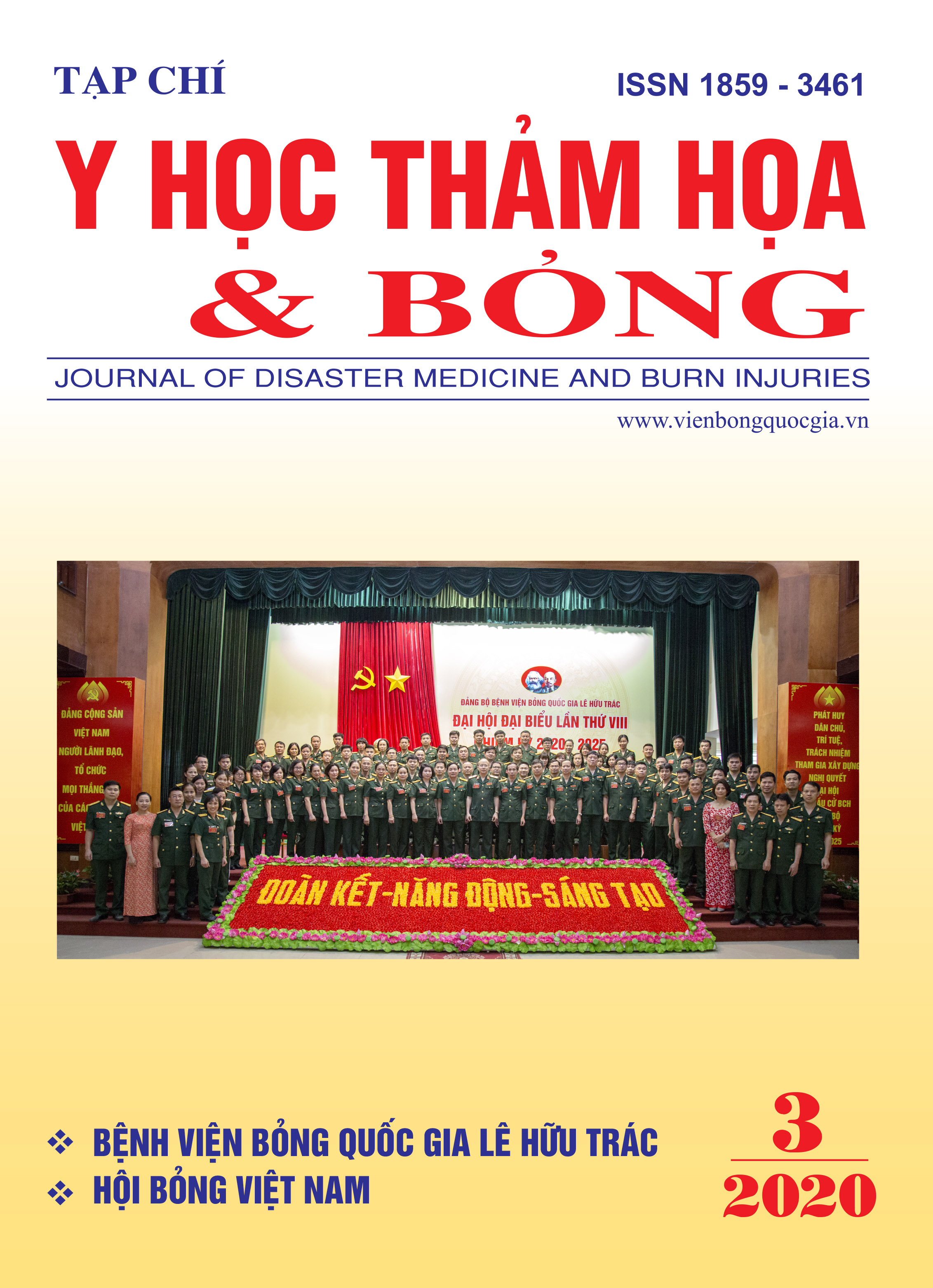Situation assessment of blood transfusion safety at the National Burn Hospital
Main Article Content
Abstract
Objective: Situation assessment of blood transfusion safety at the National Burn Hospital from 8/2018 to 5/2019.
Methods: The blood transfusions at National Burn Hospital from 8/2018 to May 2019, descriptivecross-sectionalstud, paper survey.
Resultst: The study 162 times indicated blood transfusions, there are some inappropriate transfusion indications: Red blood cell transfusion for non-surgical patients: (Red blood cell: 3.2 ± 0.8 (T/l), Hemoglobin: 90.1 ± 20.6 (g/l), Hematocrit: 0.272 ± 0.058 (l/l)).
Doctors have good basic knowledge in blood transfusion, butlack of deep knowledge in safe immune blood transfusions general knowledge about blood transfusion of doctors is relatively good, but knowledge about immune-safe blood transfusions in many doctors is not good, only 43.3% (13/30) of doctors answered correctly.
Nurse’s knowledge in safe blood transfusion is limited, 3/10 questions having the correct answer rate below 50%, the highest rate of correct answer is 89.8% in the question about Rh (+) blood type rate in Vietnam and measures to ensure safe blood transfusion. Especially, the question about the safest blood donor was only 14/49 (28.6%) of nurses answered correctly.
The knowledge and practice of nursing on blood transfusion safety is limited. Only 14/49 (28.6%) nurses answered correctly the question about storage temperature and shelf life of blood bags. The question of the time from when the blood bag is taken out of a storage cupboard until the transfusion is completed has 20/49 (40.8%) of nurses correct.
Conclusion:
- The blood transfusion at the Hospital strictly follows the clinical blood transfusion process according to Circular 26 of the Ministry of Health in 2013. But there are still also indications unreasonable red blood cell mass transfer for patients without surgery.
- Doctors have good basic knowledge in blood transfusion, however, knowledge about immune-safe blood transfusions in many doctors is not good. Knowledge and practice on safe blood transfusion of nurses are limited.
Article Details
Keywords
Blood transfusion safety
References
2. American Asociation of Blood Bank (2000). Circular of information for the use of human blood and blood components, Amerian across, Wasington. DC.
3. Ban chỉ đạo Quốc gia vận động hiến máu tình nguyện (2010). Tài liệu Hội nghị triển khai công tác vận động HMTN năm 2010. Hà Nội, ngày 15-16 tháng 01 năm 2010.
4. Nguyễn Anh trí (2011). Cung cấp máu tập trung, Tài liệu tập huấn Viện Huyết học -Truyền máu Trung ương.
5. Đỗ Trung Phấn (2000). An toàn truyền máu. NXB Khoa học kỹ thuật, Hà Nội.
6. Tổ chức Y tế Thế giới (2011). Sử dụng máu lâm sàng trong Nội khoa, Sản khoa, Nhi khoa, Phẫu thuật, Gây mê, Chấn thương và Bỏng. NXB Lao động, 8, 12-13, 102-115,198-227.
7. World Health Organization (2010). Design Guidelines for Blood Centres, ISBN 978 92 9061 319 0, WHO Library Cataloguing in Publication Data
8. Đỗ Trung Phấn (2012). Truyền máu hiện đại - cập nhật và ứng dụng trong điều trị bệnh, Chương XII. Truyền máu lâm sàng. NXB Giáo dục, 473 - 515.
9. World Health Organization (2002). Report of Workshop on Nationally Coordinated Blood Transfusion Services, Australia.
10. Đỗ Trung Phấn (2006). Thành tựu Truyền máu thế kỷ XX và những tiến bộ về Truyền máu tại Việt Nam. Một số chuyên đề Huyết học - Truyền máu. NXB Y học, Tập II, 65 - 76.


